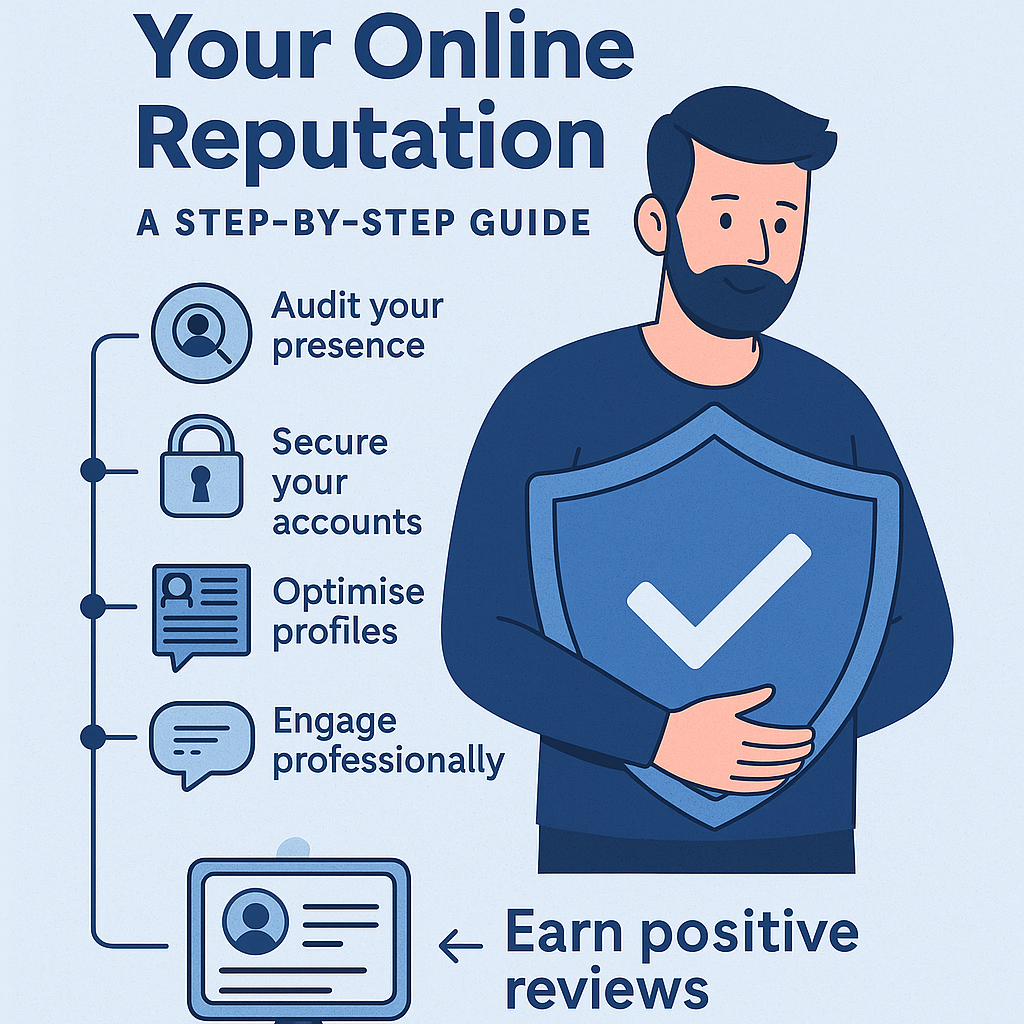
🛡️ How to Protect Your Online Reputation: A Step-by-Step Guide
Published: July 2025
In the digital age, your reputation is more than what you say about yourself—it's what the internet says about you. Whether you’re an individual professional or a freelancer, your online presence can make or break your opportunities.
This step-by-step guide will help you build trust and safeguard your credibility across all your digital platforms.
Why Your Online Reputation Matters
According to a 2024 survey, 88% of clients research freelancers online before hiring, and over half of customers abandon purchases if they see negative reviews. Your digital footprint influences your income, opportunities, and professional relationships.
Step 1: Audit Your Online Presence
Search your name and see what shows up. Note outdated profiles, inconsistent bios, negative mentions, or missing information.
Example: Emma, a freelance designer, redirected an old portfolio that ranked above her current website to avoid confusing clients.
Step 2: Secure Your Digital Accounts
- Use strong, unique passwords.
- Enable two-factor authentication.
- Update passwords regularly.
- Remove outdated apps and services.
Think of your accounts as the front door to your digital house—never leave them unlocked.
Step 3: Optimise Your Profiles
- Use a consistent, professional photo.
- Write a clear, confident bio.
- Highlight your skills and achievements.
- Update your contact information.
- Link to your website or portfolio.
Example: A copywriter refreshed her LinkedIn to match her website, increasing inquiries by 40%.
Step 4: Showcase Positive Social Proof
- Collect testimonials.
- Ask for endorsements on LinkedIn.
- Share case studies of past projects.
- Display logos of reputable clients.
Case Study: Ben, a web developer, created a “Client Stories” page that improved conversions significantly.
Step 5: Engage Professionally on Social Media
Avoid arguments and controversial topics. Be polite, share valuable insights, and maintain a professional tone—think of your social channels as an ongoing job interview.
Step 6: Address Negative Content
Stay calm and objective. Acknowledge issues, apologise if necessary, and offer to resolve them privately.
Example: A photographer responded to a negative review with an apology and discount. The client updated the review to 5 stars.
Step 7: Publish Authoritative Content
Share blog posts, tutorials, or videos to showcase expertise. This builds credibility and pushes negative results lower in search engines.
Case Study: Lisa, a marketing consultant, doubled organic traffic and boosted inbound leads by 30% after starting a blog.
Step 8: Monitor Your Reputation Continuously
- Set up Google Alerts for your name.
- Use Mention.com to track mentions.
- Review profiles monthly for consistency.
Step 9: Protect Your Brand Legally
- Register your brand and logo trademarks.
- Secure relevant domain names.
- Use clear contracts outlining terms with clients.
Example: A consultant registered her brand after an impersonator created a similar domain, protecting her business reputation.
Step 10: Build Relationships with Trusted Networks
Join professional associations, collaborate with respected businesses, and ask for referrals. A strong network helps amplify your credibility.
"Reputation is like a garden—the more you nurture it, the stronger it grows."
Conclusion
Protecting your online reputation means proactively showcasing your strengths, securing your profiles, and engaging with your audience authentically. Follow these steps to build a resilient, trustworthy presence that attracts clients, partners, and opportunities.
📣 Ready to safeguard your digital credibility?
Book a free consultation with our reputation experts today.